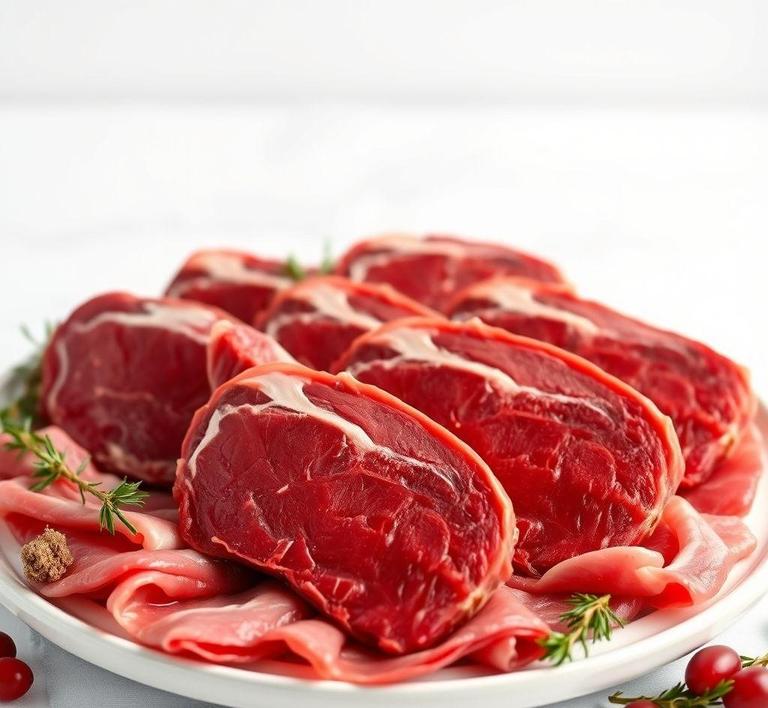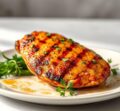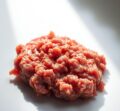If you’ve ever found yourself with leftover uncooked venison and wondered if it’s safe to refreeze, you’re not alone! While venison is known for being lean and flavorful, it can be tricky to know the best way to handle it when it comes to freezing and refreezing. This guide will walk you through the key considerations and steps to properly refreeze uncooked venison, ensuring you maintain its quality and safety for future meals. From understanding the risks of refreezing meat to tips on how to do it correctly, we’ve got you covered so you can enjoy your wild game without worry.
Can You Refreeze Uncooked Venison?

Yes, you can refreeze uncooked venison, but with critical caveats. The key determinant lies in how the meat was handled during the initial thawing process. If the venison was thawed properly-meaning in the refrigerator at or below 40°F (4°C)-and hasn’t lingered for more than a day or two, it is safe to refreeze. This guidance aligns with recommendations from the USDA and experienced hunters who value both safety and quality.
However, if venison was thawed on the kitchen counter, in warm water, or in the microwave, it enters the ‘danger zone’ of 40°F to 140°F-temperatures at which bacteria can multiply rapidly. In such cases, refreezing becomes unsafe and is strongly discouraged.
Also, bear in mind that venison is a lean red meat, lower in fat than beef, which means it’s more prone to texture changes upon freezing and thawing. That’s why even if refreezing is technically safe, it might not be the best choice for quality-conscious cooks or culinary perfectionists.
How To Refreeze Uncooked Venison?
Refreezing uncooked venison is a delicate process that requires a thoughtful approach to preserve as much of its natural flavor, texture, and safety as possible. Follow these detailed steps for optimal results:
-
Inspect the Venison:
- Examine the meat closely. Does it still smell fresh-earthy and gamey, but not sour or off?
- Ensure it hasn’t been sitting in the fridge for more than two days after the initial thaw. Any signs of spoilage-slimy surface, discoloration, or a sour smell-mean it should be discarded, not refrozen.
-
Portion and Package:
- Divide the meat into smaller, meal-sized portions to avoid having to thaw and refreeze repeatedly.
- Wrap each portion tightly in plastic wrap or butcher paper. Then place the wrapped pieces in a freezer-safe zip-top bag or vacuum-seal them for the best freezer burn protection.
- Label each package with the current date and note that it was refrozen. This helps with tracking shelf life and knowing when to use it.
-
Rapid Freeze:
- Place the venison in the coldest part of your freezer-usually the back or bottom, away from the door.
- A rapid freeze helps preserve cell structure and minimizes moisture loss. If you have a deep freezer, even better-these reach lower temperatures more quickly and maintain them more steadily than a fridge-freezer combo.
Quality Impact
While you can refreeze uncooked venison, doing so comes with undeniable quality trade-offs. Every freeze-thaw cycle disrupts the meat’s cellular structure. Ice crystals form during freezing, and when they thaw, they rupture muscle fibers, causing moisture loss. As a result, refrozen venison may feel drier, have a spongier texture, and cook less evenly.
Here are the key impacts:
- Texture: Venison that’s been frozen, thawed, and refrozen tends to be softer and slightly mushier when cooked. For preparations where texture is key-like grilled medallions or steaks-this can be a letdown.
- Flavor: While the meat’s inherent gamey flavor remains, the diminished moisture can slightly flatten the taste experience.
- Cooking Performance: Refrozen venison may release more liquid in the pan, affecting browning and caramelization. You may need to adjust cooking techniques (e.g., searing quickly at high heat) to counteract this.
- Shelf Life: The second freeze shortens the venison’s freezer lifespan. While freshly frozen venison can last up to 12 months in a deep freeze, refrozen meat is best used within 3 to 6 months for optimal quality.
Refreezing uncooked venison is a viable practice, provided that the meat was thawed properly and has remained refrigerated. While the process is safe under the right conditions, it’s important to be aware of the accompanying quality loss-mainly in texture and moisture.
For best results, always thaw venison in the refrigerator, freeze in portions to avoid multiple thaw cycles, and use airtight packaging to prevent freezer burn. If flavor, texture, and culinary performance are high on your priority list, you may prefer to cook the thawed venison and freeze the cooked product instead.
Is It Safe To Refreeze Uncooked Venison?
The answer to whether you can safely refreeze uncooked venison is not a simple yes or no-it hinges on how the meat was handled between thawing and the refreezing process. Venison, like all meats, is susceptible to bacterial growth when it enters the ‘danger zone’ of temperatures between 40°F and 140°F (4°C to 60°C). If thawed properly in the refrigerator and kept at or below 40°F the entire time, it is generally safe to refreeze, although some quality may be lost.
When venison is initially frozen and then thawed correctly-never left out on the counter or in a warm environment-it can be placed back in the freezer safely. However, repeated cycles of freezing and thawing degrade the texture and flavor. Ice crystals form and rupture cell walls in the meat, leading to a spongy, less pleasant mouthfeel upon cooking. Still, safety comes first: if the meat was kept cold and uncontaminated, it’s better to preserve it through refreezing than risk spoilage.
Signs That Uncooked Venison Should Not Be Refrozen
Refreezing venison that shows any sign of spoilage is not just unwise-it’s unsafe. Here are clear indicators that the meat has deteriorated and should be discarded:
-
Off-Putting Odor:
Fresh venison has a mild, earthy aroma-often described as clean or slightly gamey. If you detect a sour, metallic, or rotten smell, it’s a glaring sign of bacterial activity.
-
Discoloration:
While venison may darken slightly as it oxidizes, a greenish hue, dull grey or splotchy discoloration is a sign of spoilage. Also, the presence of an iridescent rainbow sheen is a red flag.
-
Slimy or Sticky Texture:
A tacky or slimy surface film, especially if it doesn’t rinse off easily with cold water, suggests bacterial buildup and decomposition.
-
Excessive Drip Loss:
Thawed venison will naturally release some liquid, but if you notice excessive pooling of blood or dark fluids, it may be a sign the meat’s integrity has been compromised.
Trust your senses. If anything seems off-even if only slightly-it’s best to err on the side of caution and dispose of the meat.
Common Refreezing Mistakes
Refreezing uncooked venison is a practice rife with potential pitfalls. Here are some common missteps to avoid:
-
Thawing at Room Temperature:
Leaving venison out on the counter encourages rapid bacterial growth. Even if the center remains cold, the outer layers can climb into unsafe temperature zones.
-
Refreezing After Long Exposure:
If thawed venison has been sitting in the refrigerator for more than 2 days, even if it looks and smells fine, it should not be refrozen. The clock starts ticking once the meat thaws.
-
Repeated Freeze-Thaw Cycles:
Each freeze-thaw round degrades the cellular structure of the meat. It’s best to portion venison before the initial freeze to prevent the need to refreeze leftovers.
-
Using Poor Packaging:
Freezer burn is the enemy of good venison. If you’re refreezing, use vacuum-sealed bags or heavy-duty freezer wrap to prevent oxidation and moisture loss.
Tips And Tricks
For hunters, home cooks, and wild game enthusiasts alike, handling venison with care can make a significant difference in both safety and flavor. Here are some professional-grade tips:
-
Portion Before Freezing:
Package venison into meal-sized portions using airtight freezer bags or vacuum sealers. This minimizes waste and avoids unnecessary thawing of large quantities.
-
Label and Date Everything:
Keep a detailed log or label each package with the date of freezing and the cut of meat. This helps ensure you use older packages first and avoid spoilage.
-
Use a Refrigerator Thermometer:
Always ensure your refrigerator is reliably at or below 40°F (4°C). A thermometer is a small investment with huge safety returns.
-
Thaw in the Refrigerator:
The slow thaw in a fridge keeps venison out of the temperature danger zone. For quicker thawing, submerge the sealed package in cold water, changing the water every 30 minutes.
-
Cook Immediately If in Doubt:
If the meat has been thawed under safe conditions but you’re unsure about refreezing, the best route is to cook it. Once cooked, venison can be frozen again for later use.
Conclusion
Handling wild game like venison requires an extra measure of diligence. While it is safe to refreeze uncooked venison under the right conditions-specifically when it has been thawed in the refrigerator and hasn’t lingered for more than a day or two-doing so comes with both safety considerations and quality trade-offs.
Keep your senses sharp: any whiff of sourness, any hint of slime, or visible signs of discoloration should signal immediate disposal. Avoid common mishandling errors and embrace best practices like portioning, proper labeling, and temperature vigilance.
Refreezing venison doesn’t have to mean compromising your meal-it just requires informed handling. With a bit of foresight and care, you can enjoy the rich, lean flavors of venison safely and deliciously, time and time again.


